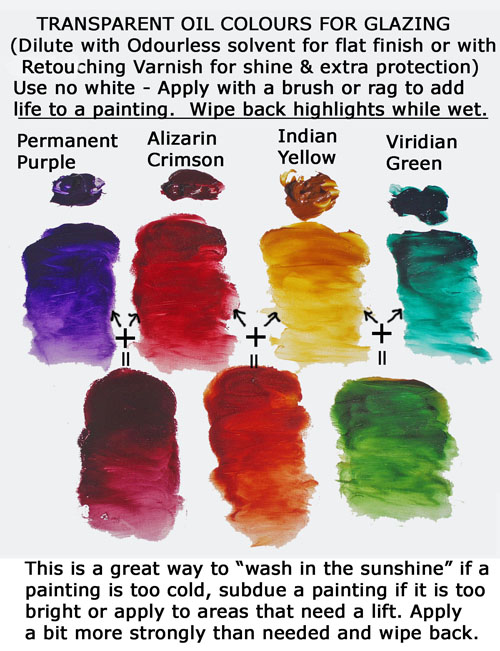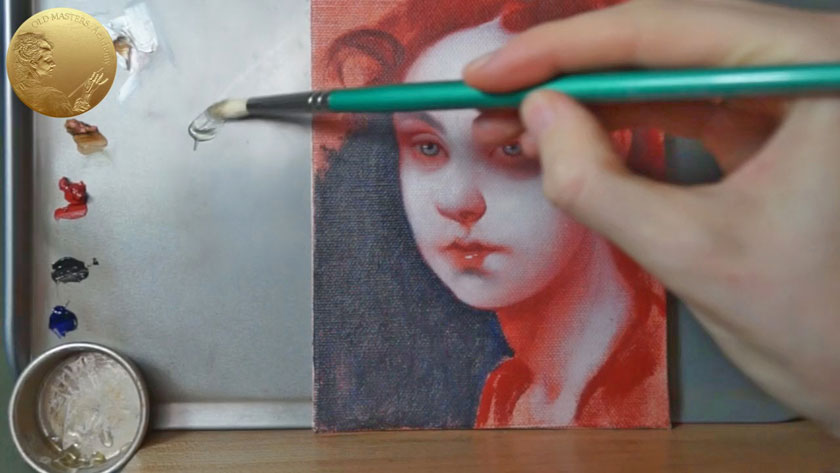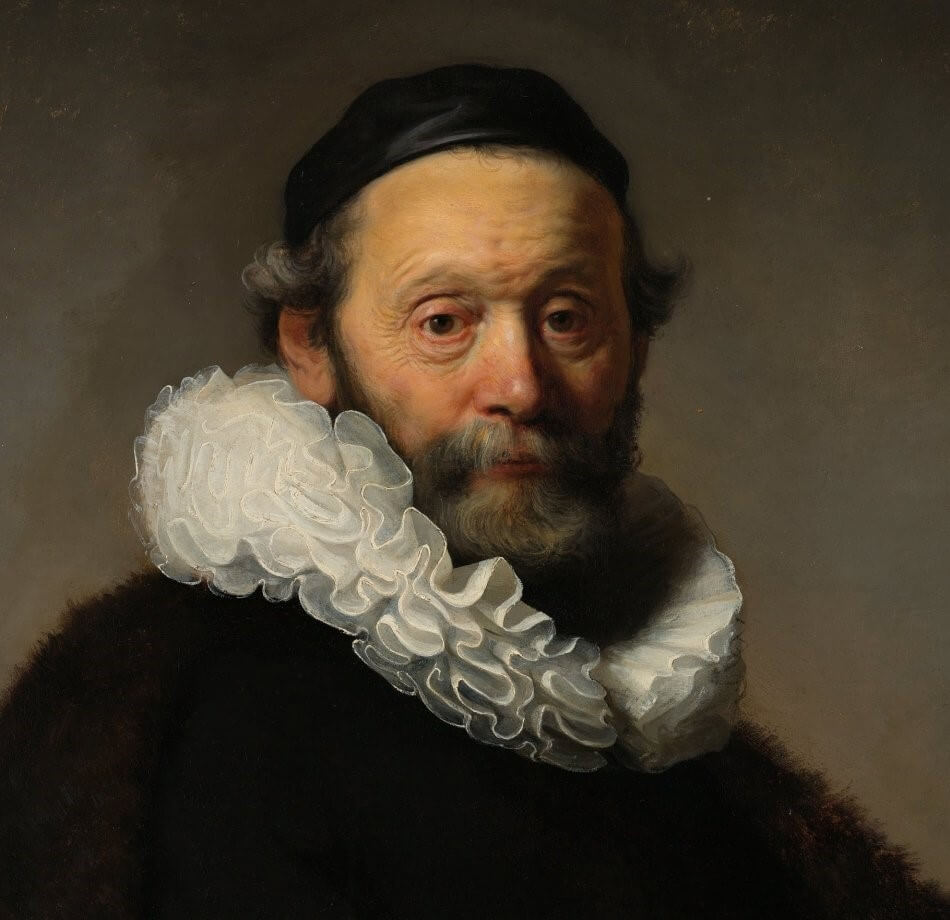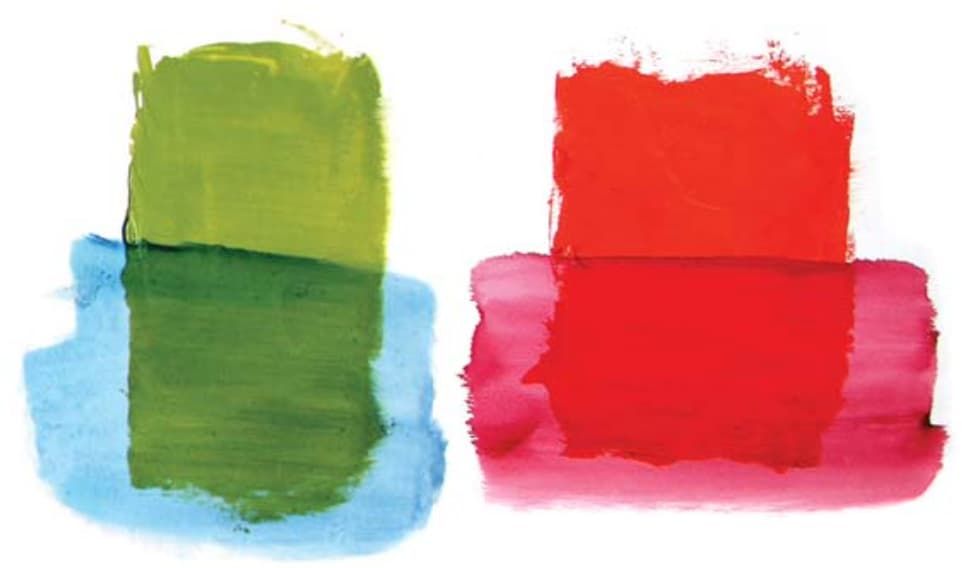Painters practice this technique with the goal of adding depth and structure to the painting while also contrasting the colors and tones. We need a stiff Hog Brush.
To thin pigment for glazing layers we add more oil.

. As you build up the amount of oil into the paint the. This will give you your 50 neutral grey. For example I use glazes when painting shallow rivers and lakes where you can see the river or lake bed below to give the water a transparent shiny and glass-like appearance.
Looking at the finished roses closely you can see the layers of colors that make. This is because in the glazing process your base opaque layer is straight oil paint its totally oily. This is done by adding small amounts of color to your glaze medium until you reach the.
Layers applied after that base must be oily as well. Although in theory it is very simple in practice glazing can be a very complex undertaking. Step 1 I toned an archival board with a thin layer of gray using diluted Mars black.
Another popular technique for glazing is layering different colors on top of each other. Glazing is a technique used by oil painters to create a transparent layer of paint on top of the older already dried paint layers often using only one pigment in the process. Start with the lightest values.
Add twice as much turpentine to the jar as the stand oil you added. Now a glaze is simply a suspension of pigment in oil. Add two parts turpentine for one part of the oil youre using.
This can be linseed poppy walnut or. Glazing is a technique that I use a lot in my oil paintings. Squeeze out a blob of black onto your palette.
Glazing exists as a popular technique within oil painting and is a good one for beginners to learn. By example the beetles carapace needs to be greener. 1 Paint an underlayer in monochrome paint.
With a glaze you can change a color with out changing the pattern of. If you want to. We take undiluted Stand Oil add a bit of Yellow and rub the paint into the surface with circular movements trying to spread the paint as thinly as possible.
On the other side squeeze out a blob of titanium white paint. The glaze is then applied with a sable brush to the horizontal painting. How to Use Glazes to Create Luminosity in Your Oil Paintings 1.
How to glaze an oil or acrylic painting. Its fun to add cool or warm glazes to deepen values or create special areas that glow. This video demonstrates the light version of the masters technique in oil color glazing.
Glazing with oil paint using a neutral hue lowers the value of the color. Allow it to dry overnight. Ad Shop Our Wide Variety Of Natural And Unique Pigments Today.
Glazing in this instance is another term for thin washes of transparent paint mixed either with appropriate solvents or Retouching Varnish if using oils. Paints suitable for glazing an oil painting have pigments that tend to be transparent with the addition of medium. These two ingredients combined will give you a basic glaze to work with in your paintings.
In the middle of your black and white blobs mix exactly 50 white and 50 black. As each additional layer of color is applied it changes the hue of the previous layer and the finish takes on a glossy appearance. With its help we will cover the whole surface of the painting in a thin glaze layer.
Glazing is a technique employed by painters since the invention of oil painting. Every paint pigment by nature becomes transparent semitransparent or opaque when mixed with oil. Glazing is the process of applying a thin layer of translucent or transparent oil paint over a dry opaque layer of oil paint which creates an effect unlike any other.
This is a Glaze. The underpainting as the dried layer. So if youve placed 1 ounce of stand oil in your jar add 2 ounces of turpentine.
Explore Thousands of Inspiring Classes for Creative and Curious People. It has become apparent from online painting lessons being requested that an oil painting glazing tutorial as well as a post covering misting effects is needed. The GLAZE formula is mixed on the palette with thalo green a transparent color until the degree of transparency necessary is achieved.
In the simplest terms glazing consists of applying a transparent layer of paint over another thoroughly dried layer of opaque paint usually with a wide soft-bristled brush. That technique can also be applied with acrylicsIt basically star. You can use a grisaille in which you paint in shades of grey or use other colors such as green called a Verdaccio or brown called a Bistre.
Light travels through the transparent or translucent layer of oil paint and bounces off the opaque layer creating a sort of glowing effect that is very difficult to create with other oil painting techniques. Glazing Oil Painting Technique Glazing with Transparent Colors. Lets first look at GLAZING.
Add warm and cool areas. We will use Stand Linseed Oil as the Glazing Medium. In fact it is one of the techniques I use to make my oil paintings look more photorealistic.
It has oil or medium with little specks of paint in it. This method makes use of painting thin clear layers on top of a dry opaque base layer. Ad Fun and Easy-to-Follow Classes to Keep You Engaged and Learning.

Glazing Technique In Oil Painting Old Masters Academy

Glazing Technique In Oil Painting Old Masters Academy

The Glazing Technique For Oil Painting Fine Art Tutorials

How To Glaze An Oil Portrait Course New Course Will Kemp Art School

Glazing Oil Painting Techniques Step By Step Demonstration Youtube

How To Use The Glaze Technique Effectively Old Holland Classic Colours

Glazing With Oil Paint Techniques Demo Artists Network

Glazing Painting Techniques A Web Art Academy Painting Techniques Oil Painting Techniques Art Academy
0 comments
Post a Comment